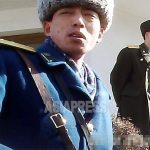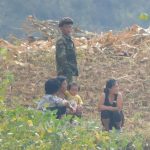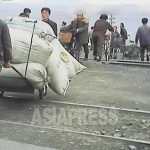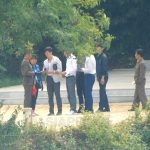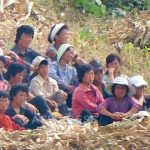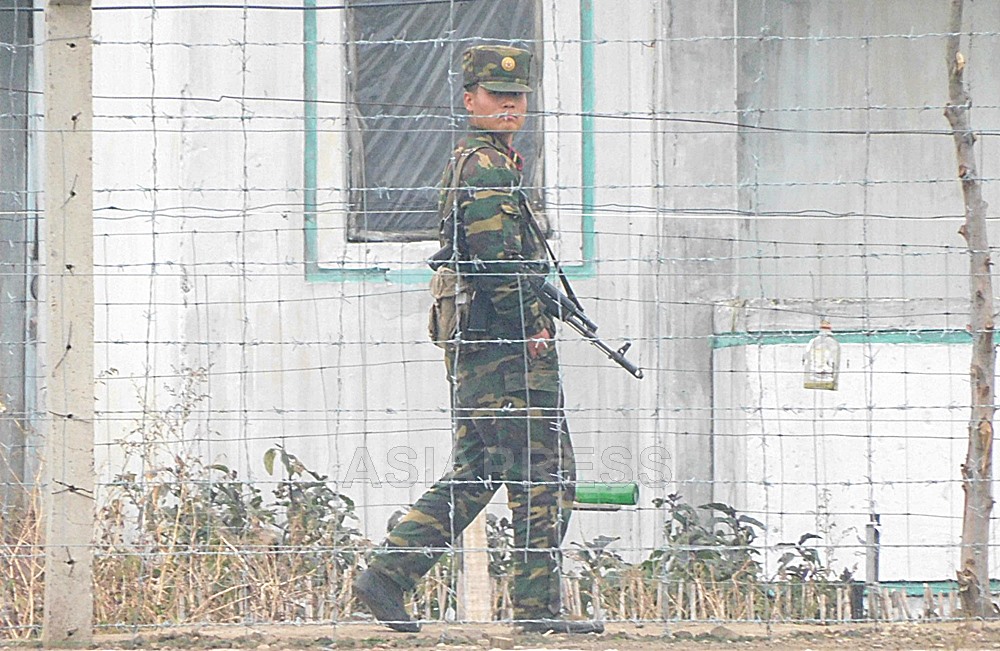
◆ “Smuggling and defections are now impossible”
Over the past three years and 10 months, the Kim Jong-un regime has been intensifying security along the border area with China more than at any other time and completely closing off the Tumen and Yalu riverbanks with barbed-wire fencing and sentry posts. An ASIAPRESS reporting partner said that a border security guard told him that “mines are buried under the ground, leading even soldiers to fear for their lives.” (KANG Ji-won / ISHIMARU Jiro)
In August, the reporting partner, who lives in Yanggang Province, met with “A,” a noncommissioned officer who work as a border guard in the upstream area of the Yalu River. Starting in July, North Korean authorities loosened COVID-era restrictions on soldiers being able to leave their bases. “A” is a veteran border guard in his late 20s. Another reporting partner in North Hamgyung Province surveyed local people about the security system in place on the border.
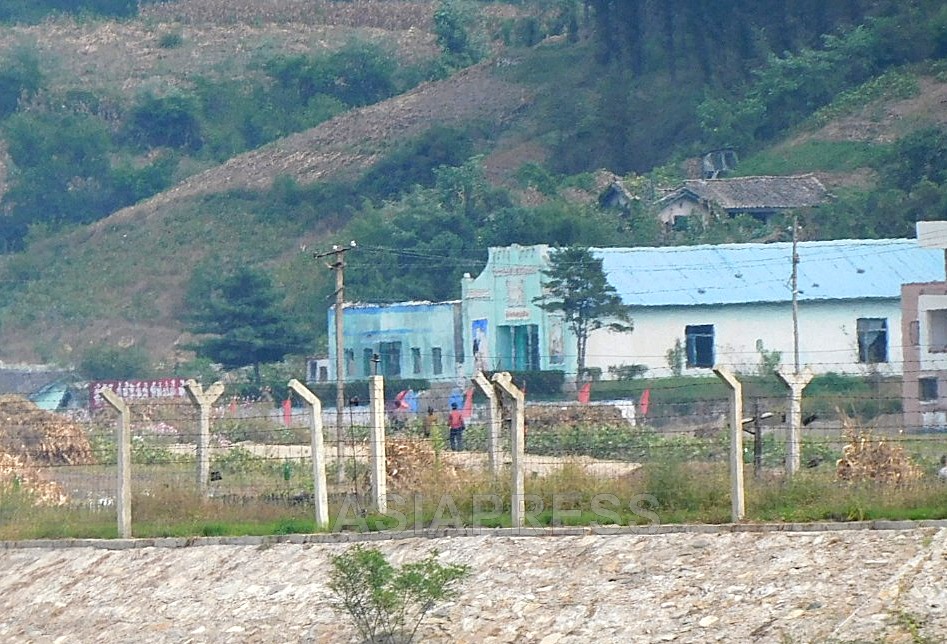
◆ Surveillance cameras and electrified barbed-wire fencing
“It’s no longer possible for anyone to do smuggling or defect.”
“A” made this firm statement before explaining:
“There are surveillance cameras operating 24-hours-a-day. Personnel area continuously watch the monitors in places that are in particular need for monitoring, and videos are saved to storage so that higher-level officers can view them. North Korea’s electricity situation is very bad, but electricity is sent through the barbed-wire fencing at random times, so border guards are so afraid that they avoid going near the fencing for fear of being electrocuted on rainy days. Construction on a buffer zone 500 meters from the border is continuing, and we’ve been ordered not to allow even on ant from crossing over the border. When the buffer zone construction is completed, civilians won’t be able to approach the border.
A reporting partner in Hoeryong, which is on the banks of the Tumen River, provided the following testimony about the building of a buffer zone in late August.
“Villages near the Tumen River are being demolished to make way for the buffer zone, and the authorities continue to forcibly deport locals to other places. Land owned by collective farms near the border aren’t being destroyed; instead, fences are put around them to limit who can enter them as the harvest continues. Guards enter the farming areas with the farmers to make the farmers do not approach the border. The authorities warn that anyone entering the areas without permission with be fired upon.
The designation of a buffer zone on the border began with a proclamation announced by the national police agency in August 2020, soon after the COVID-19 pandemic began. The proclamation acquired by ASIAPRESS says that “anyone approaching the border will be unconditionally fired upon.”
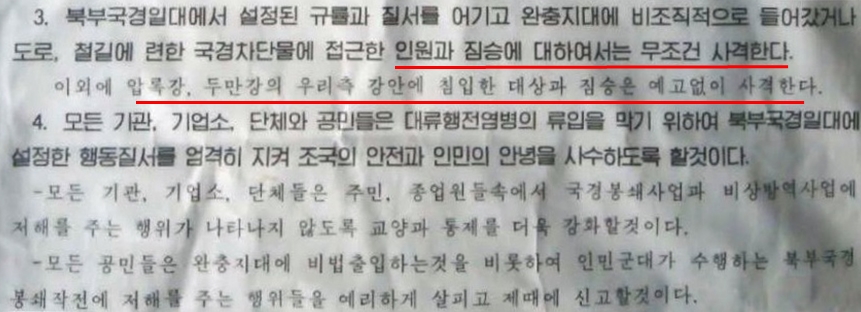
◆ Are landmines really buried on the border?
Starting in late 2021, unconfirmed reports began to be heard about mines being buried near the banks of the Tumen and Yalu rivers to prevent border crossings and smuggling into China. The authorities also warned local residents not to approach the border areas.
However, would the authorities really bury mines to prevent their own people from crossing the rivers into China? Moreover, floods and other natural disasters could unseat the mines and cause incidents in China. In fact, ASIAPRESS avoided publishing reports about the burying of mines on the border because of a lack of clear evidence.
“A,” the border guard who spoke with a reporting partner in August, gave the following testimony about landmines on the border:
“A specialized military engineering unit placed the mines in the ground. However, it’s a secret where and how many land mines have been buried. That’s why even border guards are scared because they don’t know where the mines are.”
A reporting partner in Hoeryong heard about the landmine situation from locals living near the Tumen River.
“The landmine issue is serious. A local person said there were many mines that were carried down the Tumen River during the monsoon rains this year, so the military and laborers were mobilized to recover and repair the mine installations.”
Daily NK, a North Korea-focused news outlet in South Korea, reported on November 6 that five people attempting to defect to China in mid-October were injured or killed after stepping on a landmine.
ASIAPRESS contacted a reporting partner in Musan County to confirm the story but received the following reply: “I don’t know if that incident occurred.”
Have the North Korean authorities buried landmines on the border? Even if mines have been buried, are they real? North Korea may have buried fake mines to spread fear among would-be defectors. At this point, ASIAPRESS is unable to confirm whether landmines have been buried in the border region.
※ ASIAPRESS communicates with reporting partners through Chinese cell phones smuggled into North Korea. ( To 2 >> )
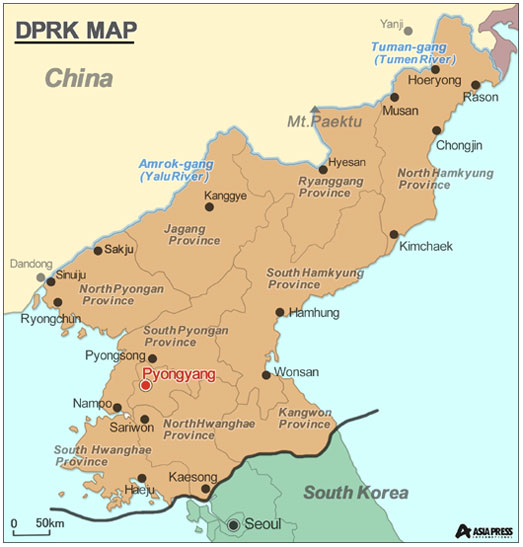
- <Inside N. Korea> A recent report on conditions at farms (7) Many people mobilized to harvest this year’s good yield of potatoes… But, “several tons of potatoes are going rotten in a storage facility each day”
- <Inside N. Korea > A recent report on conditions at farms (6) Major investigation underway after end of harvest to uncover corruption by cadres…Unfair punishment causes uproar on one farm
- <Inside N. Korea> A recent report on conditions at farms (1) The harvest is better than last year, but lack of materials remains a serious problem (4 recent photos)
- <Inside N. Korea> Unusual changes in the Army (2) Starvation spreads even in the military…Why now? Increase in soldiers sent home for malnutrition “Military bases have soldiers take afternoon naps instead of doing training”
- <Inside N. Korea>Unusual changes in the Army (1) In a rare move, police are tasked with cracking down on breaches of military discipline as crimes by soldiers and desertions increase
